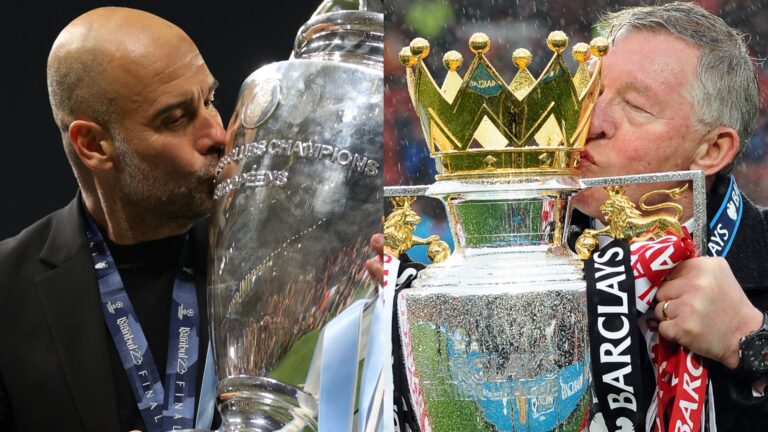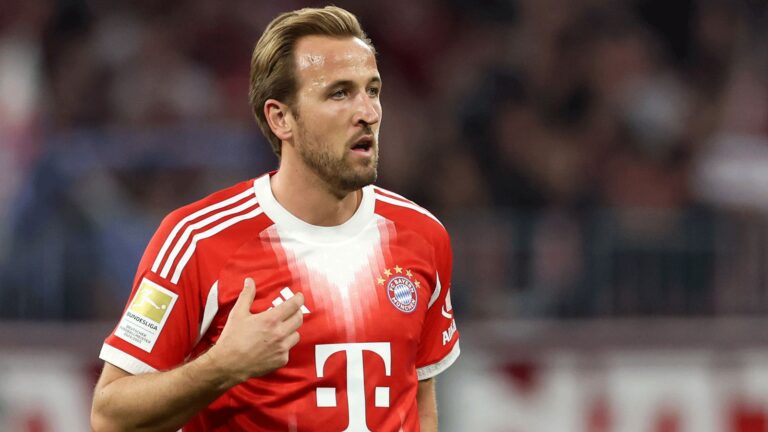




Unveiling MLS Salary Secrets: Messi’s Lead and League Dynamics
In the ever-competitive world of Major League Soccer (MLS), star power often translates to hefty paychecks, and MLS salaries continue to draw attention as teams vie for top talent. This analysis dives into the latest figures, highlighting how Inter Miami’s roster, led by global icon Lionel Messi, sets the benchmark for earnings across the league. With earnings reflecting a mix of star appeal and strategic investments, these numbers underscore the financial strategies shaping MLS today.
Top Individual Salaries in MLS
Dominating the payroll landscape, Inter Miami features prominently with two elite earners in the highest rankings. Lionel Messi claims the top spot at an impressive $20.45 million, while Sergio Busquets holds third place at $8.8 million. It’s important to highlight that these earnings do not incorporate Messi’s most recent contract update. Right on Messi’s heels is LAFC’s emerging talent Son at $11.45 million, with Atlanta United’s Miguel Almiron and San Diego FC’s Hirving “Chucky” Lozano filling out the leading quintet, showcasing the depth of high-profile investments in the league.
Spotlight on Loan Players
Beyond the headline names, this overview uncovers compensation details for players like De Paul and Aaronson. Notably, the figures for De Paul and New England Revolution’s Matt Turner indicate the actual payments clubs are making during their loan periods in MLS, offering a glimpse into how temporary arrangements impact team budgets and player valuations.
Exploring Team Payroll Breakdowns
Delving deeper, the report provides insights into overall team expenditures, where Inter Miami leads with a substantial $48.97 million payroll, surpassing other teams by $18.87 million-a margin that exceeds the entire budgets of 15 other clubs. Looking ahead, Inter Miami stands to free up $14.78 million after this season due to the departures of Busquets and Jordi Alba, potentially paving the way for fresh acquisitions to bolster their lineup.
Leading Teams in Expenditures
Following Inter Miami, LAFC secures second position with $30.1 million, trailed closely by Atlanta United at $28.5 million, FC Cincinnati at $23.2 million, and the Chicago Fire at $23.1 million, painting a picture of the financial hierarchy driving competition in the league.
Challenges and Strategies in MLS Spending
Amid calls for increased investment from figures like Messi, who advocates for greater financial resources in MLS, there are whispers of discontent regarding how certain teams navigate salary cap regulations. Reports from sources like The Athletic point to Inter Miami’s maneuvers in securing players such as De Paul, raising questions about league compliance and equity.
Innovative Approaches to Contracts
Similarly, teams like the Whitecaps have adopted creative tactics, as seen with their deal for Thomas Muller. Unlike a loan setup, they opted for a more modest agreement this season, with an option for a designated player status next year-resulting in Muller earning $1.44 million, per MLSPA data, which illustrates the varied methods clubs use to attract international stars while managing fiscal constraints.
The Top Earners in MLS
Lionel Messi’s Salary Breakdown and Impact on Inter Miami
When it comes to Major League Soccer (MLS), Lionel Messi’s arrival has been nothing short of revolutionary, and his earnings reflect his status as one of the greatest players in soccer history. Currently, Messi tops the MLS salary rankings with a whopping $20.45 million, making him the highest-paid player in the league by a significant margin. This figure includes his base salary, bonuses, and other incentives tied to his performance and Inter Miami’s success.
Messi’s deal with Inter Miami, which he joined in 2023, highlights how MLS teams are willing to invest heavily in global superstars to boost visibility and fan engagement. As a designated player under MLS rules, Messi’s salary doesn’t count fully against the team’s salary cap, allowing clubs like Inter Miami to attract top talent without financial restrictions that limit other rosters.
- Key components of Messi’s earnings: His $20.45 million package reportedly includes a base salary of around $12 million, plus performance-based bonuses, sponsorship deals, and revenue from merchandise. This structure not only rewards his on-field prowess but also leverages his massive global following to drive MLS popularity.
- How it compares league-wide: In the broader context of MLS salary rankings, Messi’s earnings dwarf those of other stars, emphasizing the league’s growing appeal to international players seeking new challenges outside Europe.
- Impact on team dynamics: Messi’s presence has elevated Inter Miami’s profile, drawing record crowds and increasing ticket sales, which indirectly supports his high salary through boosted team revenues.
Son Heung-min’s Earnings at LAFC and Rising Profile in MLS
Shifting focus to another high-profile player, Son Heung-min of LAFC sits at $11.15 million in the MLS salary rankings, positioning him as a key contender among the league’s top earners. Son, known for his electric speed and scoring ability, has made waves since joining LAFC, bringing his world-class skills from his time in the Premier League with Tottenham Hotspur.
This salary figure for Son underscores LAFC’s strategy to build a competitive squad with a mix of international stars and homegrown talent. As a designated player, his earnings allow LAFC to maintain flexibility in their roster while competing at the highest level. Son’s $11.15 million package is a testament to his proven track record, including multiple Golden Boot awards in the Premier League and consistent performances for the South Korean national team.
- Breakdown of Son’s compensation: Much like Messi, Son’s deal includes a base salary estimated at $8 million, supplemented by bonuses for goals, assists, and team achievements. Sponsors and image rights also play a role, capitalizing on his popularity in Asia and beyond.
- Comparisons in the rankings: When pitted against Messi’s earnings, Son’s $11.15 million highlights the gap between the absolute elite and other top MLS players. For instance, players like Luis Suarez or Sergio Busquets might earn in a similar range, but Son’s speed and versatility make him a standout in LAFC’s lineup.
- Benefits for LAFC and fans: Son’s addition has not only strengthened LAFC’s attack but also attracted a diverse fanbase, with his games often featuring high attendance and global viewership. This influx of interest helps justify his salary by increasing the club’s marketability.
Factors Influencing MLS Salary Rankings
Understanding what drives MLS salary rankings involves looking at the league’s unique structure. Salaries in MLS are shaped by rules like the designated player rule, which permits teams to sign stars above the salary cap, and the overall budget allocated for player wages.
The Designated Player Rule and Its Role
The designated player (DP) rule is a game-changer in MLS, allowing clubs to sign up to three players whose salaries exceed the league’s cap. For Messi and Son, this rule has been pivotal, enabling Inter Miami and LAFC to offer competitive packages that lure top talent from around the world.
- How it works in practice: Under this rule, only a portion of a DP’s salary counts toward the team’s cap, making it feasible for teams to afford players like Messi at $20.45 million or Son at $11.15 million without crippling their finances.
- Pros and cons for teams: While it boosts competitiveness and star power, critics argue it creates disparities between wealthier clubs and others, potentially affecting league parity.
Emerging Trends in MLS Salaries
MLS salaries have been on an upward trajectory, driven by increased broadcasting deals, stadium developments, and global interest in soccer. Top earners like Messi and Son reflect this evolution, with average salaries rising steadily each year.
- Salary growth statistics: According to recent reports, the average MLS player salary has increased by over 20% in the last few years, with designated players leading the charge. This trend is fueled by investments from team owners and partnerships that enhance revenue streams.
- Other key players to watch: Beyond Messi and Son, players like Lorenzo Insigne of Toronto FC or Riqui Puig of LA Galaxy are also climbing the rankings, with salaries around $7-9 million, showing the depth of talent in MLS.
The Bigger Picture: How High Salaries Affect League Growth
Within the realm of MLS salary rankings, the high earnings of stars like Messi at $20.45 million and Son at $11.15 million play a crucial role in the league’s expansion. These salaries not only motivate players but also inspire young athletes aspiring to reach the top.
Economic and Fan Engagement Impacts
High-profile salaries contribute to economic growth by attracting sponsorships and tourism. For instance, Messi’s games with Inter Miami often sell out quickly, generating millions in revenue that offsets his earnings.
- Fan engagement metrics: Teams with top earners see a spike in social media followers and merchandise sales, with keywords like “Messi MLS salary” and “Son Heung-min LAFC earnings” trending online.
- Broader implications: This investment in stars enhances the league’s global reputation, potentially leading to more high-salary signings in the future.
In analyzing player earnings, it’s clear that factors like performance clauses and contract length significantly influence deals. For Messi and Son, their salaries represent not just personal achievements but also the evolving landscape of professional soccer in the U.S.
Contract Details and Negotiation Strategies
Contracts in MLS often include multi-year terms with options for extensions, giving players like Son stability while allowing teams to plan for the future. Messi’s deal, for example, is structured to include equity in the club, blending salary with long-term benefits.
- Negotiation tips for players: Aspiring pros should focus on performance metrics and marketability when discussing salaries, as these elements can justify higher figures similar to Son’s $11.15 million.
- Team perspectives: Clubs prioritize players who can deliver on the pitch and off, ensuring that investments like Messi’s $20.45 million yield returns through wins and fan loyalty.
This detailed look at MLS salary rankings, particularly for stars like Messi and Son, provides a clear picture of how the league is positioning itself as a major player in global soccer.









